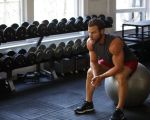- 1-Understanding-Muscle-Hypertrophy-for-Beginners
- 2-Key-Components-of-a-Hypertrophy-Workout-Routine
- 3-Beginner-Friendly-Exercises-for-Muscle-Growth
- 4-Structuring-Your-Workout-Plan
- 5-Importance-of-Recovery-and-Nutrition
- 6-Real-Life-Success-Story-of-Muscle-Growth
1. Understanding Muscle Hypertrophy for Beginners
Muscle hypertrophy refers to the increase in muscle size resulting from resistance training. For beginners, understanding the basics of hypertrophy is essential to creating an effective gym workout routine. This involves working muscles under tension with sufficient volume and intensity to stimulate growth.
Beginners often experience rapid progress as their muscles adapt to new stimuli, but success requires consistent training combined with proper form and progression.
2. Key Components of a Hypertrophy Workout Routine
An effective hypertrophy workout routine includes moderate to high training volume, moderate weights with 6-12 repetitions per set, and multiple sets per exercise. Rest periods of 60 to 90 seconds optimize muscle fatigue without compromising recovery between sets.
Progressive overload, the gradual increase of resistance or volume, is crucial for continuous muscle growth. Incorporating compound movements alongside isolation exercises targets multiple muscle groups and promotes balanced development.
3. Beginner-Friendly Exercises for Muscle Growth
For beginners, focusing on foundational exercises such as squats, deadlifts, bench presses, rows, and overhead presses builds strength and muscle effectively. These compound movements engage large muscle groups and improve overall coordination.
Complementing these with isolation exercises like bicep curls, tricep extensions, and leg curls helps address specific muscles, aiding in muscle symmetry and aesthetics.
4. Structuring Your Workout Plan
A balanced gym workout routine for hypertrophy beginners often includes training 3 to 4 times per week, allowing full-body or split routines that cover all major muscle groups. For example, alternating upper and lower body workouts or push-pull-legs splits provide variety and adequate recovery.
Tracking progress by recording weights, sets, and reps helps ensure steady improvement. Periodically adjusting the workout plan to increase intensity or volume maintains muscle adaptation.
5. Importance of Recovery and Nutrition
Muscle growth occurs during rest, making recovery as important as training. Beginners should aim for quality sleep, manage stress, and allow muscles time to repair between sessions. Incorporating active recovery techniques like stretching can reduce soreness and improve mobility.
Nutrition plays a vital role; consuming sufficient protein, carbohydrates, and healthy fats fuels workouts and supports muscle repair. Hydration and timing of meals further enhance hypertrophy results.
6. Real Life Success Story of Muscle Growth
Alex, a beginner to strength training, followed a structured hypertrophy routine emphasizing compound lifts and consistent progression. Within six months, Alex gained noticeable muscle mass and strength, crediting the well-balanced workout plan and nutrition guidance from Fitness.
Alex’s journey demonstrates that beginners can achieve impressive muscle growth by following a focused gym workout routine tailored for hypertrophy.
For expert advice, workout plans, and supplements to support your muscle-building goals, visit Fitness to find tailored products and professional guidance.








